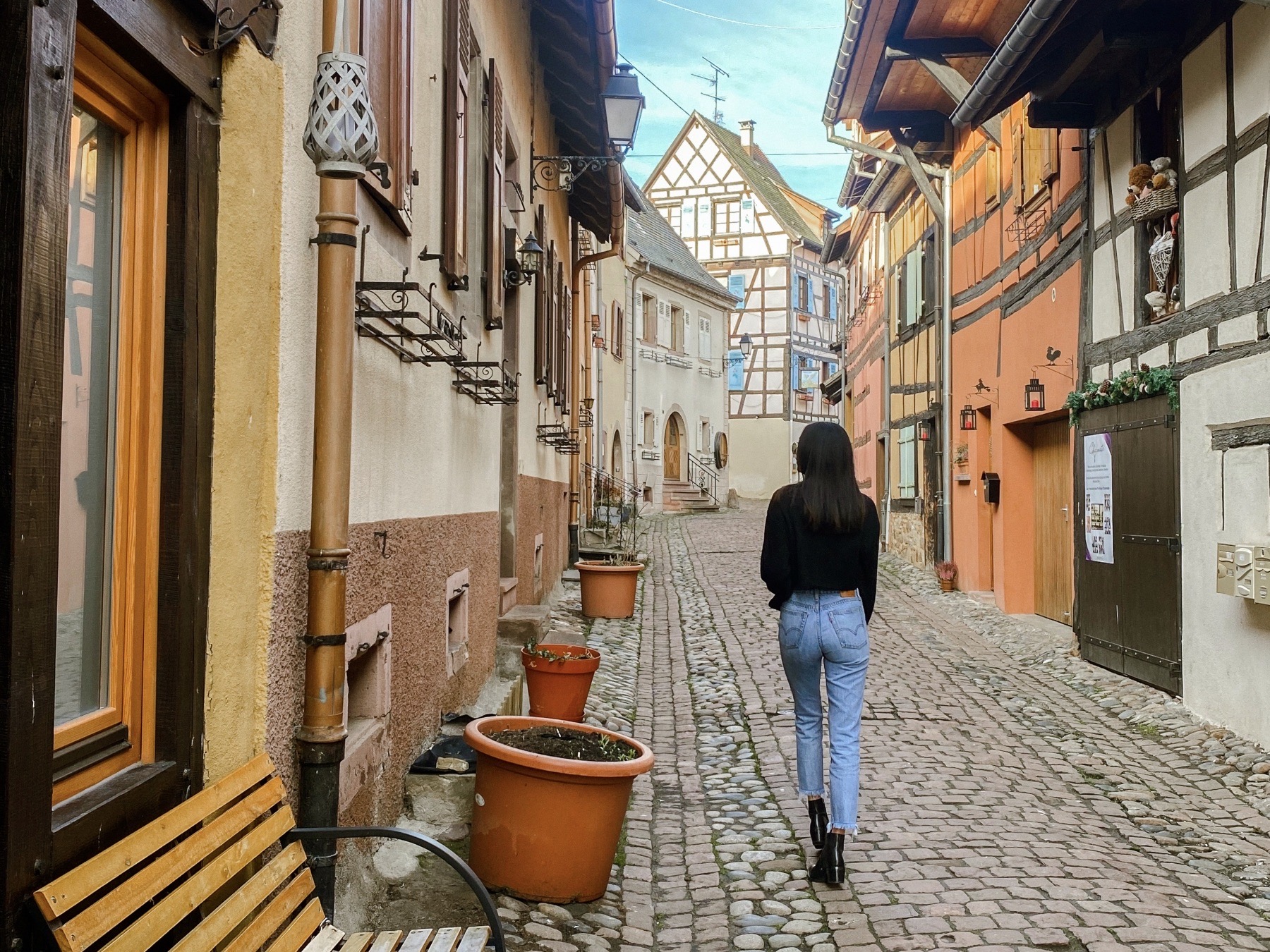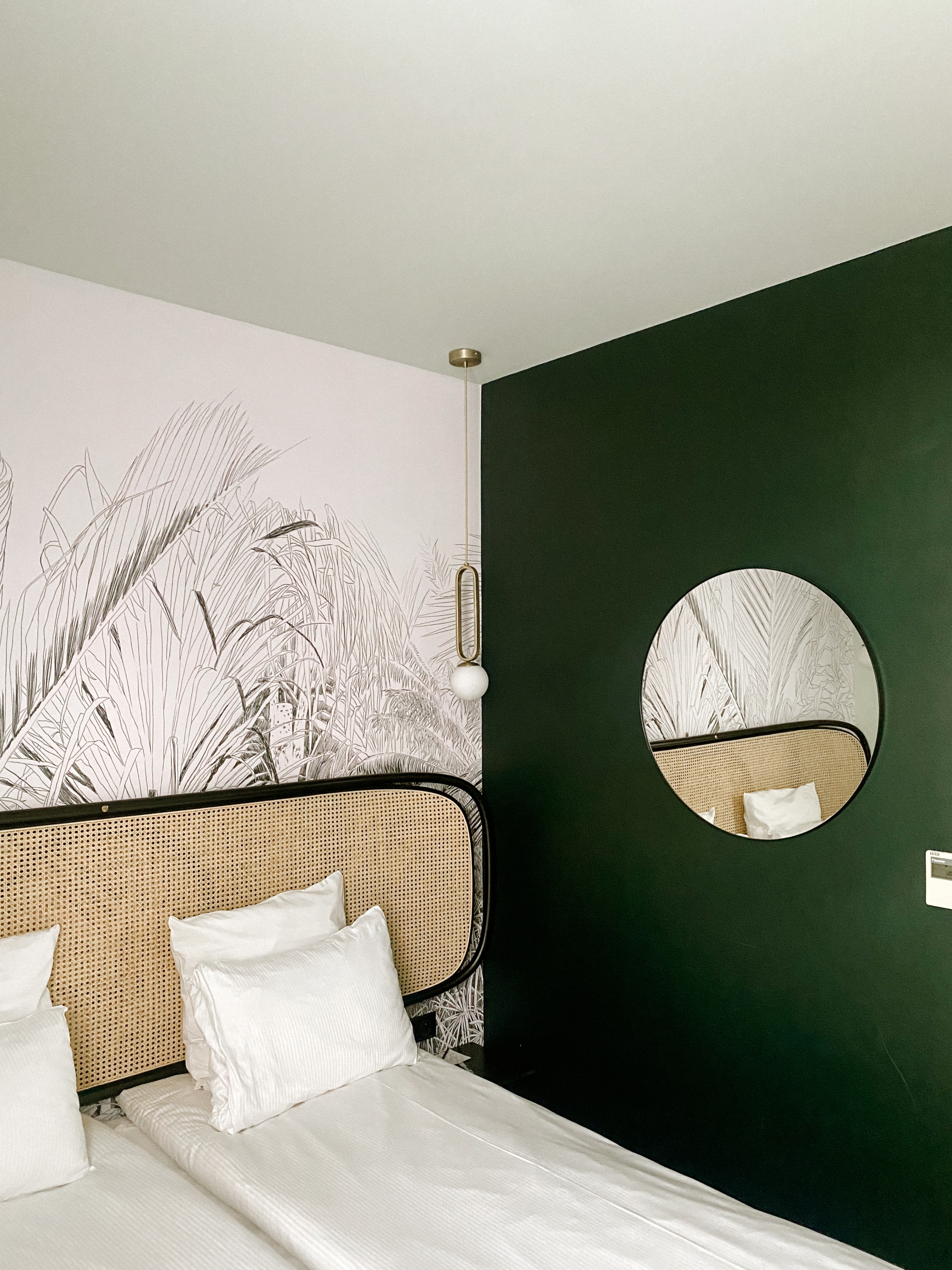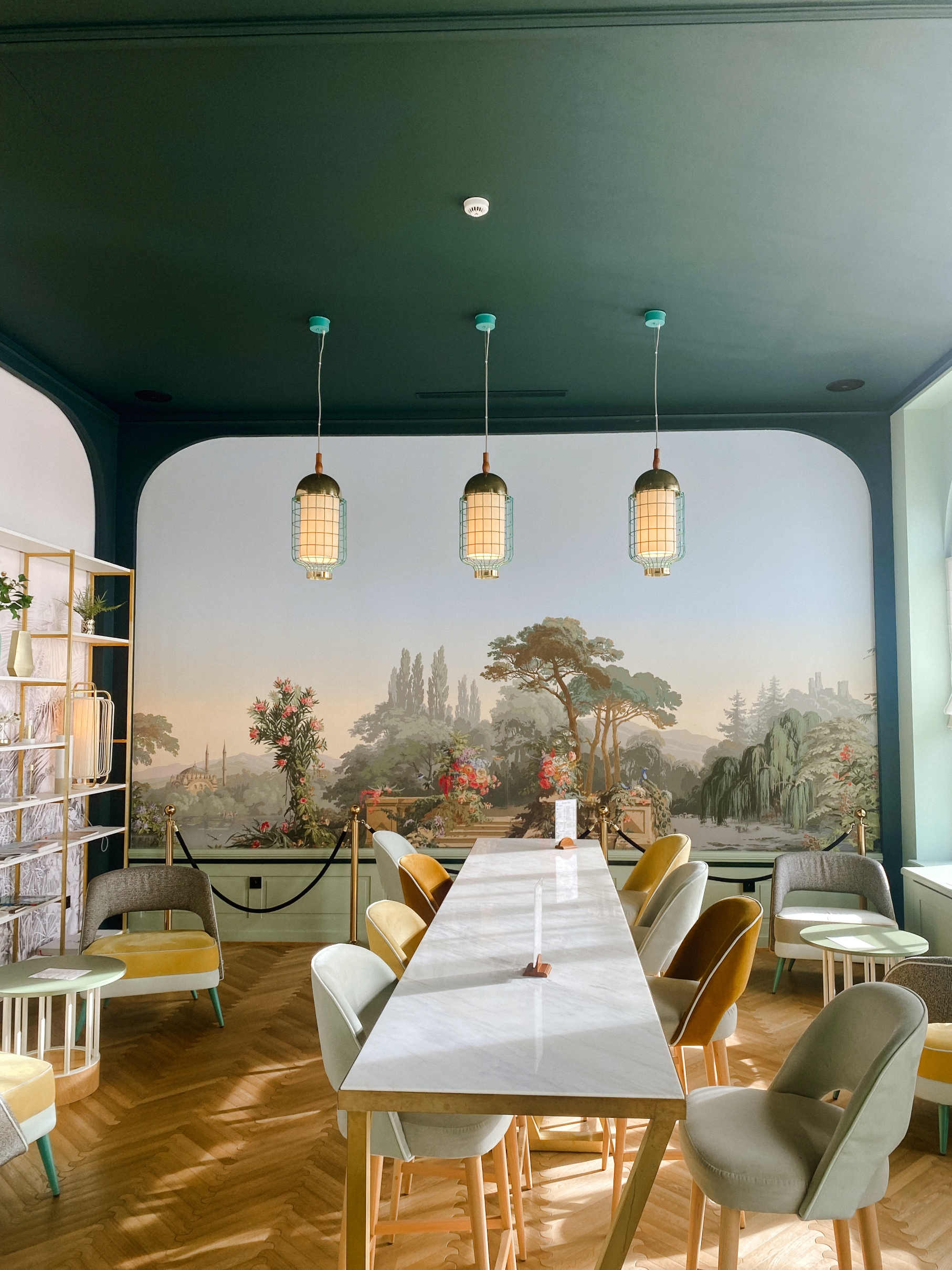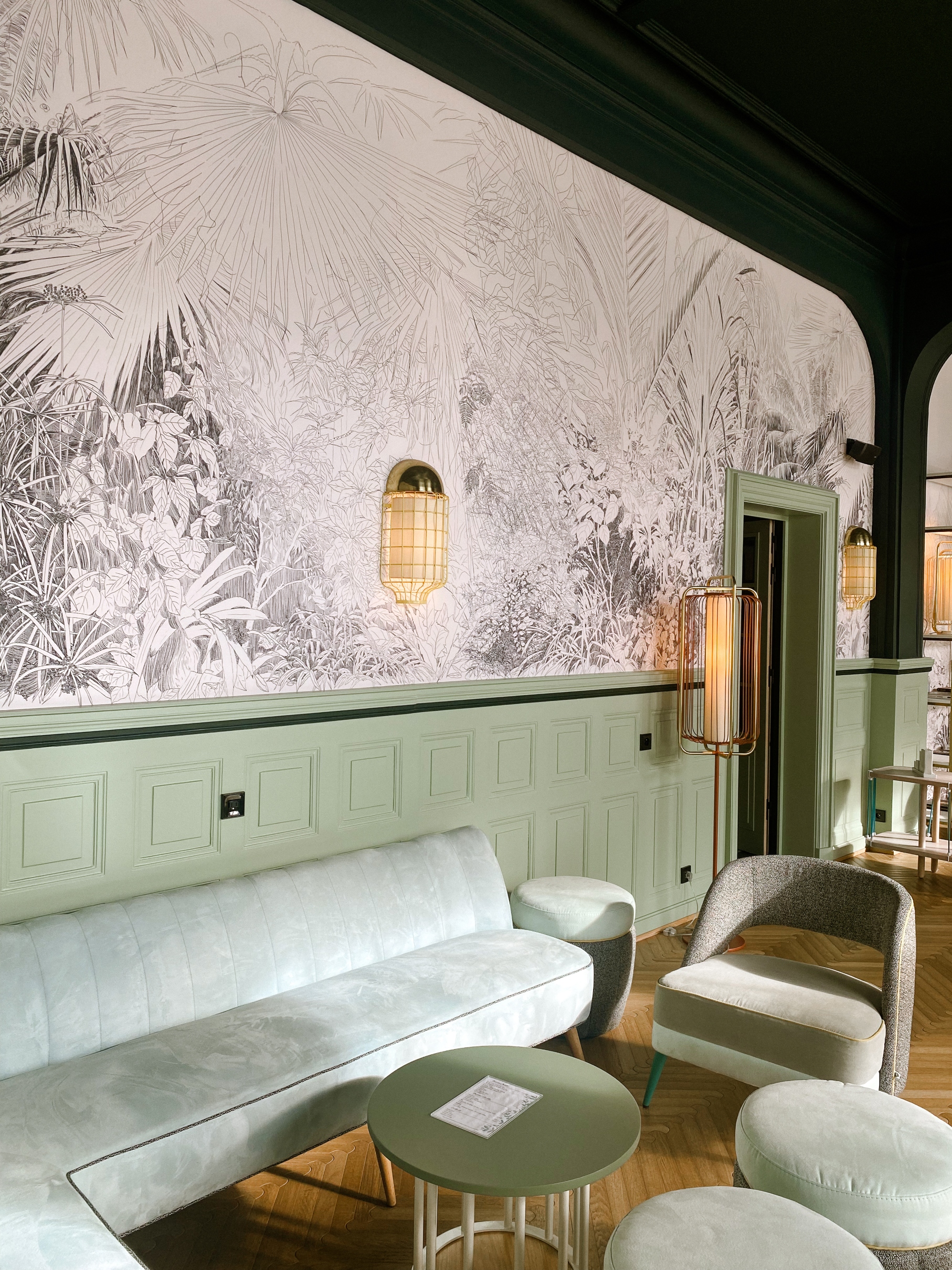
dessert
Visiting Alsace, France – The Complete 3-Day Travel Guide and Itinerary
April 10, 2023
Last updated on March 3rd, 2024 at 04:56 am
If you appreciate history, wine, unique architecture, and overall European culture – do yourself a favor and start planning your 2024 trip to Alsace immediately. Still very much under the radar and easy to reach by train from Paris, Alsace is a region that lies on the border of France and Germany. The proximity to major cities makes it a desirable place for a day-trip or weekend getaway.
The itinerary below covers mostly Colmar and Eguisheim, two historic villages in Alsace, but there are plenty of other villages to see.
Day 1:
Morning Arrival into Alsace
You can get to Alsace in a number of different ways but I chose to take the train from Paris. I bought a one-way ticket for 30€ and the journey took ~2 1/2 hours. I had to change trains at Strasbourg which was a breeze.
Once I arrived in Colmar, I walked one block to my hotel at The Grand Bristol Hotel. Most people choose to stay in the center of Colmar but I had a train to catch to Milan the next day so I chose something conveniently located to the train station. Even being by the train station, it was only a 10 minute walk into the center.



Book your room at the Grand Bristol Hotel here.
Visit the Fairytale Village of Colmar
Colmar is where the Alsatian charm comes alive. Recently, social media has made this place extremely popular and even more-so during the holidays. Every inch of Colmar is decorated with Christmas lights, garland, and festive characters around the entire village. Not to mention, there are Christmas markets on every corner.

If you happen to be visiting outside of the holidays – don’t worry! There’s still plenty to do such as strolling around La Petite Venise (Little Venice), visiting Musée Unterlinden (art museum), and tasting your way through the fresh food at Marché Couvert (covered market).

Grab a snack before dinner
Even though the city is small, it’s likely that you’ll want to rest your legs from all the trotting around cobblestone paths. Located right in the heart of Colmar, Jadis et Gourmande is a wonderful place to stop for a light snack and to recharge. They serve classic French cuisine but are best known for their homemade desserts such as the meringue or rhubarb pie.

Anyone else also appreciate a good afternoon sugar rush?
Indulge in a typical Alsatian meal
Having been passed back and forth between France and Germany multiple times, one can expect the food to have a heavy influence of both cultures. With more of a focus on German flavor, the cuisine here can only be described as extremely rich and hearty – which makes sense considering the region regularly sees temperatures around 30° during the winter months.
Traditional Alsatian classics include:
Baeckeoffe – Translated to mean “baker’s oven”, Baeckeoffe is akin to a hearty meat and vegetable stew. Aux Armes de Colmar serves one of the most authentic Baeckeoffe in the area. They even have an outdoor terrace for you to enjoy on sunny days.
Flammekueche – Also known as Tarte Flambée, Flammekueche can be described similarly to a thin crust pizza covered in cheese, thinly sliced onions, and small cubes of bacon. Where should you try a Flammekueche in Colmar? Look no further than Restaurant La Soï which specializes in a Tarte Flambée only menu.

Choucroûte Garnie – Once again, the German influence is strong and Choucroûte Garnie is another popular Alsatian dish that’s prepared with sauerkraut, potatoes, sausage, and other types of salted meat. Probably obvious by now but Alsace is not the place to come if you’re looking for something healthy.
Good thing you’re on vacation and La Maison Rouge par Petit Jean is THE place to go for superb Choucroûte Garnie. It is frequently visited by both tourists and locals alike.
Day 2:
Travel to Eguisheim
Eguisheim is the closest winemaking village to Colmar, making it the best option for folks with limited time.
Renting a car is probably the easiest way to get around Alsace especially if you plan on slowly making your way along the wine route. I chose not to rent a car but was able to catch a taxi right outside the train station for 15€. During the warmer months, you can also cycle between the two villages. It takes about 30 minutes since they are only ~4mi apart.
Reserve an Intimate Wine Tasting
Being the original birthplace of the Alsatian vineyards, Eguisheim is notorious for varietals such as Riesling, Pinot Gris, Muscat, and Gewürztraminer. As you can see, almost all the wine produced in the Alsace region is white, with the small exception of Pinot Noir.

Listed below are some of the wineries I suggest visiting if you want an intimate tasting experience and the chance to meet the winemakers and their families.
You can also opt for a full day wine tour which includes transportation, tastings, and commentary from knowledgeable wine guides.
Domaine Grus & Fils – My first and favorite stop in Eguisheim. As soon as you enter, you’ll notice that the place isn’t anything extravagant. In fact, it actually feels like you’ve stepped into someone’s living room and that makes complete sense once you realize that the winemakers live on the property itself. They’ve converted the downstairs into a tasting room and the family lives upstairs. Tastings here cost 1€/glass. Being a California native, this was seriously unheard of. The riesling was dry, and they produce wine from two different grand cru.
Domaine Jean-Louis MANN and Fabienne – My second stop was with Domaine Jean-louis Mann and Fabienne which produces organic and natural wines. The tasting is FREE and you get to learn about how the same grape, planted on different soils, will completely change the taste and composition of the wine.

Maison Wolfberger – As you enter the village of Eguisheim, this will be the first winery on your right. This was my last stop before heading back to Colmar. Wolfberger is a brand leader in Crémant d’Alsace (sparkling wine) and has been around since 1902. This winery was the least intimate of the three but the tasting was pleasant and definitely still worth a visit.

Enjoy a Self-Guided Walking Tour

If you were to view the village of Eguisheim from above, you’ll notice that it’s shaped like an oval. There is a main road, Rue due Remport, that traces around the outer edge of town. There is a self-guided tour that you can take if you start at the tourism office and go clockwise from there. There are 9 plaques (and QR codes) along the way that include information and illustrations depicting the history of each stop.
Have you visited Alsace or any of the surrounding villages? Let me know in the comments below!
Traveling to other parts of Europe? Check out my other travel guides here.
April 10, 2023
Last updated on March 3rd, 2024 at 04:56 am
If you appreciate history, wine, unique architecture, and overall European culture – do yourself a favor and start planning your 2024 trip to Alsace immediately. Still very much under the radar and easy to reach by train from Paris, Alsace is a region that lies on the border of France and Germany. The proximity to major cities makes it a desirable place for a day-trip or weekend getaway.
The itinerary below covers mostly Colmar and Eguisheim, two historic villages in Alsace, but there are plenty of other villages to see.
Day 1:
Morning Arrival into Alsace
You can get to Alsace in a number of different ways but I chose to take the train from Paris. I bought a one-way ticket for 30€ and the journey took ~2 1/2 hours. I had to change trains at Strasbourg which was a breeze.
Once I arrived in Colmar, I walked one block to my hotel at The Grand Bristol Hotel. Most people choose to stay in the center of Colmar but I had a train to catch to Milan the next day so I chose something conveniently located to the train station. Even being by the train station, it was only a 10 minute walk into the center.



Book your room at the Grand Bristol Hotel here.
Visit the Fairytale Village of Colmar
Colmar is where the Alsatian charm comes alive. Recently, social media has made this place extremely popular and even more-so during the holidays. Every inch of Colmar is decorated with Christmas lights, garland, and festive characters around the entire village. Not to mention, there are Christmas markets on every corner.

If you happen to be visiting outside of the holidays – don’t worry! There’s still plenty to do such as strolling around La Petite Venise (Little Venice), visiting Musée Unterlinden (art museum), and tasting your way through the fresh food at Marché Couvert (covered market).

Grab a snack before dinner
Even though the city is small, it’s likely that you’ll want to rest your legs from all the trotting around cobblestone paths. Located right in the heart of Colmar, Jadis et Gourmande is a wonderful place to stop for a light snack and to recharge. They serve classic French cuisine but are best known for their homemade desserts such as the meringue or rhubarb pie.

Anyone else also appreciate a good afternoon sugar rush?
Indulge in a typical Alsatian meal
Having been passed back and forth between France and Germany multiple times, one can expect the food to have a heavy influence of both cultures. With more of a focus on German flavor, the cuisine here can only be described as extremely rich and hearty – which makes sense considering the region regularly sees temperatures around 30° during the winter months.
Traditional Alsatian classics include:
Baeckeoffe – Translated to mean “baker’s oven”, Baeckeoffe is akin to a hearty meat and vegetable stew. Aux Armes de Colmar serves one of the most authentic Baeckeoffe in the area. They even have an outdoor terrace for you to enjoy on sunny days.
Flammekueche – Also known as Tarte Flambée, Flammekueche can be described similarly to a thin crust pizza covered in cheese, thinly sliced onions, and small cubes of bacon. Where should you try a Flammekueche in Colmar? Look no further than Restaurant La Soï which specializes in a Tarte Flambée only menu.

Choucroûte Garnie – Once again, the German influence is strong and Choucroûte Garnie is another popular Alsatian dish that’s prepared with sauerkraut, potatoes, sausage, and other types of salted meat. Probably obvious by now but Alsace is not the place to come if you’re looking for something healthy.
Good thing you’re on vacation and La Maison Rouge par Petit Jean is THE place to go for superb Choucroûte Garnie. It is frequently visited by both tourists and locals alike.
Day 2:
Travel to Eguisheim
Eguisheim is the closest winemaking village to Colmar, making it the best option for folks with limited time.
Renting a car is probably the easiest way to get around Alsace especially if you plan on slowly making your way along the wine route. I chose not to rent a car but was able to catch a taxi right outside the train station for 15€. During the warmer months, you can also cycle between the two villages. It takes about 30 minutes since they are only ~4mi apart.
Reserve an Intimate Wine Tasting
Being the original birthplace of the Alsatian vineyards, Eguisheim is notorious for varietals such as Riesling, Pinot Gris, Muscat, and Gewürztraminer. As you can see, almost all the wine produced in the Alsace region is white, with the small exception of Pinot Noir.

Listed below are some of the wineries I suggest visiting if you want an intimate tasting experience and the chance to meet the winemakers and their families.
You can also opt for a full day wine tour which includes transportation, tastings, and commentary from knowledgeable wine guides.
Domaine Grus & Fils – My first and favorite stop in Eguisheim. As soon as you enter, you’ll notice that the place isn’t anything extravagant. In fact, it actually feels like you’ve stepped into someone’s living room and that makes complete sense once you realize that the winemakers live on the property itself. They’ve converted the downstairs into a tasting room and the family lives upstairs. Tastings here cost 1€/glass. Being a California native, this was seriously unheard of. The riesling was dry, and they produce wine from two different grand cru.
Domaine Jean-Louis MANN and Fabienne – My second stop was with Domaine Jean-louis Mann and Fabienne which produces organic and natural wines. The tasting is FREE and you get to learn about how the same grape, planted on different soils, will completely change the taste and composition of the wine.

Maison Wolfberger – As you enter the village of Eguisheim, this will be the first winery on your right. This was my last stop before heading back to Colmar. Wolfberger is a brand leader in Crémant d’Alsace (sparkling wine) and has been around since 1902. This winery was the least intimate of the three but the tasting was pleasant and definitely still worth a visit.

Enjoy a Self-Guided Walking Tour

If you were to view the village of Eguisheim from above, you’ll notice that it’s shaped like an oval. There is a main road, Rue due Remport, that traces around the outer edge of town. There is a self-guided tour that you can take if you start at the tourism office and go clockwise from there. There are 9 plaques (and QR codes) along the way that include information and illustrations depicting the history of each stop.
Have you visited Alsace or any of the surrounding villages? Let me know in the comments below!
Traveling to other parts of Europe? Check out my other travel guides here.
Comments Off on Visiting Alsace, France – The Complete 3-Day Travel Guide and Itinerary